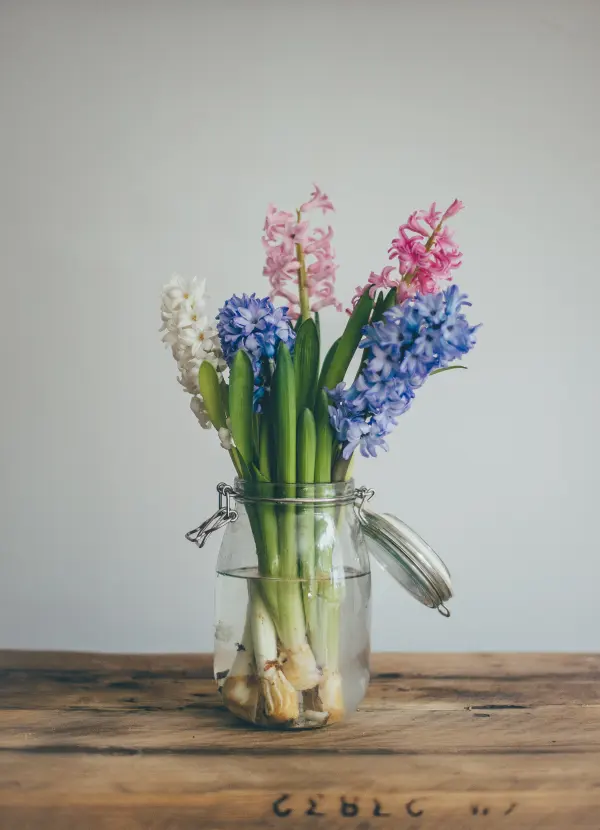Hyacinthus
| Name: Hyacinthus | Family: Asparagaceae | Type Plant: Perennial bulb, used as a cut flower |
| Flowering time: Early to mid-spring (March to April) | Best time to buy: Late winter to early spring (when in bloom) | Max Height: 20-30 cm |
| Sun/Shadow: Full sun to partial shade |
Origin
Hyacinths, scientifically known as Hyacinthus orientalis, are native to the eastern Mediterranean region, including Turkey, Syria, Lebanon, and the surrounding areas. They were first cultivated in ancient Persia and spread throughout Europe during the 16th century. The flower gained immense popularity in the Netherlands, becoming a prominent feature of Dutch flower cultivation.
Characteristics
Unique Shape: Dense, elegant spikes of bell-shaped blooms that open into star-like flowers.
Vibrant Colors: A rainbow of hues, including rich purples, sky blues, blush pinks, creamy whites, and sunny yellows.
Captivating Fragrance: Famous for their strong, sweet scent that fills a room with springtime vibes.
Growing Charm: Even in a vase, hyacinths can continue to grow slightly, adding a dynamic element to your display.
Symbolism: Linked to Greek mythology, they embody rebirth, constancy, and playful love.
Care
Cut Stems: Trim diagonally for better water absorption.
Vase Prep: Use clean, lukewarm water and floral preservatives.
Water Change: Replace water every 2 days and re-cut stems.
Placement: Keep cool, away from sunlight and ripening fruit.
Stem Maintenance: Rinse sticky sap from stems for better hydration.









